Gibson Custom Shop's rarest signature Les Paul Standards: Jimmy Page, Joe Walsh, Don Felder and Billy Gibbons 'Burst replicas examined in-depth
Historic Hardware: we get up close and personal with some of the most coveted guitars to come out of the Custom Shop
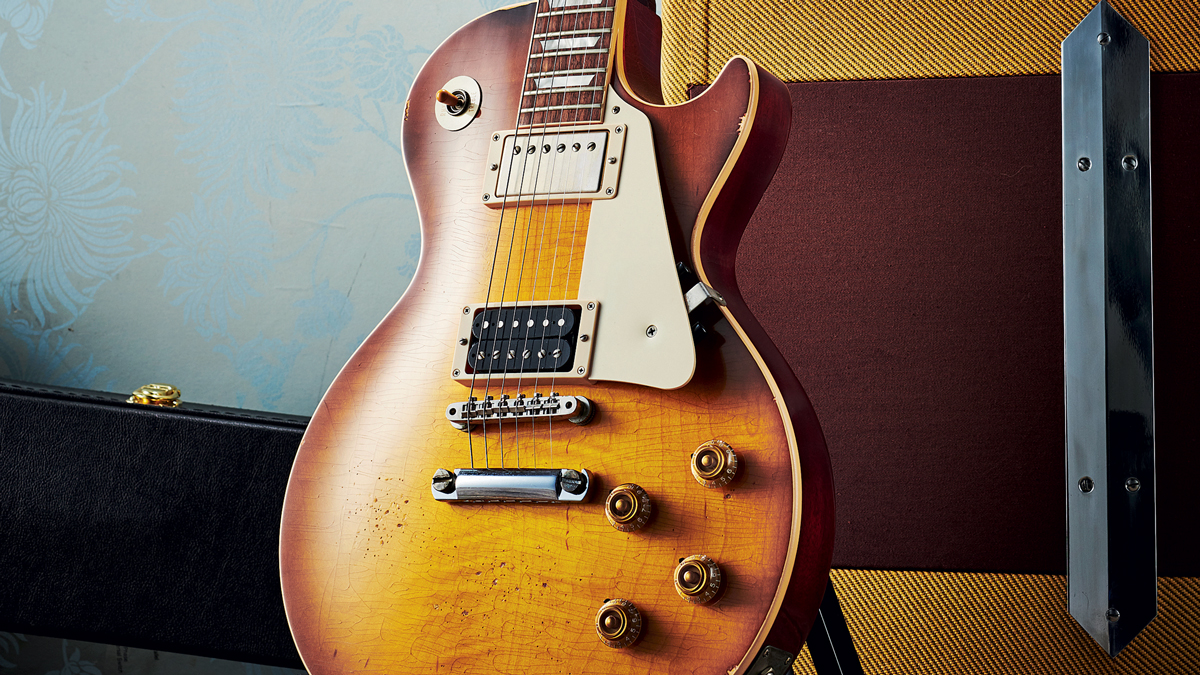
When it comes to electric guitars, there is one that sits firm in the hard rock throne as Gibson’s crowning glory: the Les Paul Standard.
From Keith Richards, Eric Clapton and Peter Green to Gary Moore, Slash and Joe Bonamassa, the ’Burst has prevailed as the company’s most iconic and enduring image across the decades.
Beginning in 1996 with the Joe Perry Les Paul, the Gibson Custom Shop began honouring our beloved Les Paul-wielding guitar gods with their very own signature models (a signature signature model, if you will!).
However, not all guitars were created equal – especially within the mysterious confines of Gibson’s Custom Shop – and when we heard that a collection of top-drawer Jimmy Page, Joe Walsh, Don Felder and Billy Gibbons ’Burst replicas had arrived at Vintage ‘n’ Rare, we wasted no time in booking ourselves an appointment with co-owner Steve Hove to bring you a little closer to these rare beauties.
Gibson tried to match everything as closely as possible, even down to the weight. They meticulously analysed the original instruments to replicate the contours and wear as closely as possible
“They’re all based on a particular ’Burst these guys used back in the day,” begins Steve, “so they’re a bit different to a regular signature model that has been custom spec’d at the factory. They are the top-of-the-line Custom Shop Les Pauls and were made in strictly limited runs.
“The quality and the demand is there, and there’s only so much stock, so the prices have appreciated quite a bit – much like the original run of around 1,600 ’Bursts [made between 1958 and 1960]. They came in three different versions: VOS, aged, and signed and aged.
“The majority are VOS guitars – they’re more affordable but they still feel like old guitars. In the middle tier are the hand-aged instruments, while the top-tier ones have also been played and signed by the artist.”
Get The Pick Newsletter
All the latest guitar news, interviews, lessons, reviews, deals and more, direct to your inbox!
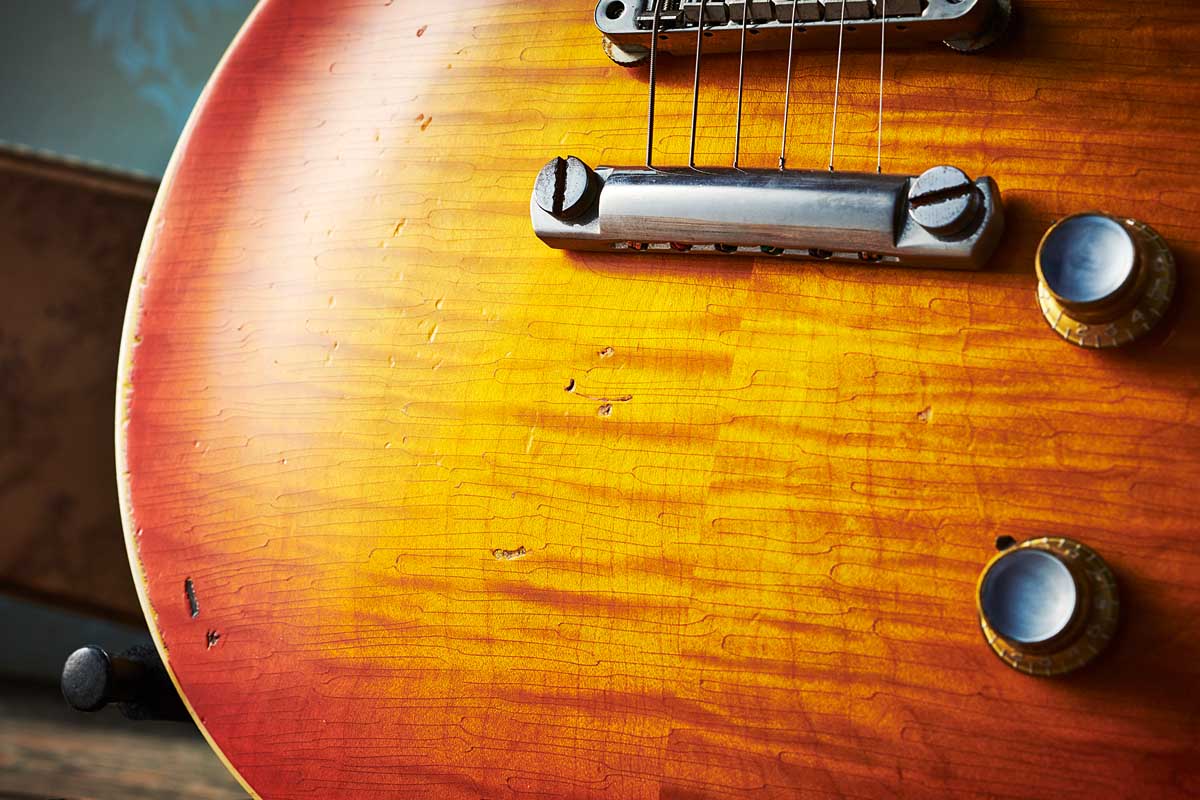
Appealing to fans and collectors, they offer a unique piece of rock ’n’ roll history and are as close as most will ever get to owning the real thing.
“But they’re also great instruments in their own right,” adds Steve. “Gibson tried to match everything as closely as possible, even down to the weight. They meticulously analysed the original instruments to replicate the contours and wear as closely as possible. A lot of work went into choosing the maple for the tops to match the flame of the original guitars.
By their nature, ’Bursts have their own unique features – the tops are always different and the PAF pickups all have their own character
“By their nature, ’Bursts have their own unique features – the tops are always different and the PAF pickups all have their own character. Some of that is reflected in these guitars but it’s also about the way a guitar changes over the years depending on who’s played it. That’s a very personal thing that has been encapsulated in these Les Pauls.”
Reflecting the customised neck profile and electronics of Jimmy’s original ’Burst, the 2009 Gibson Custom Shop Jimmy Page ‘Number Two’ Les Paul is perhaps the most personalised of the bunch.
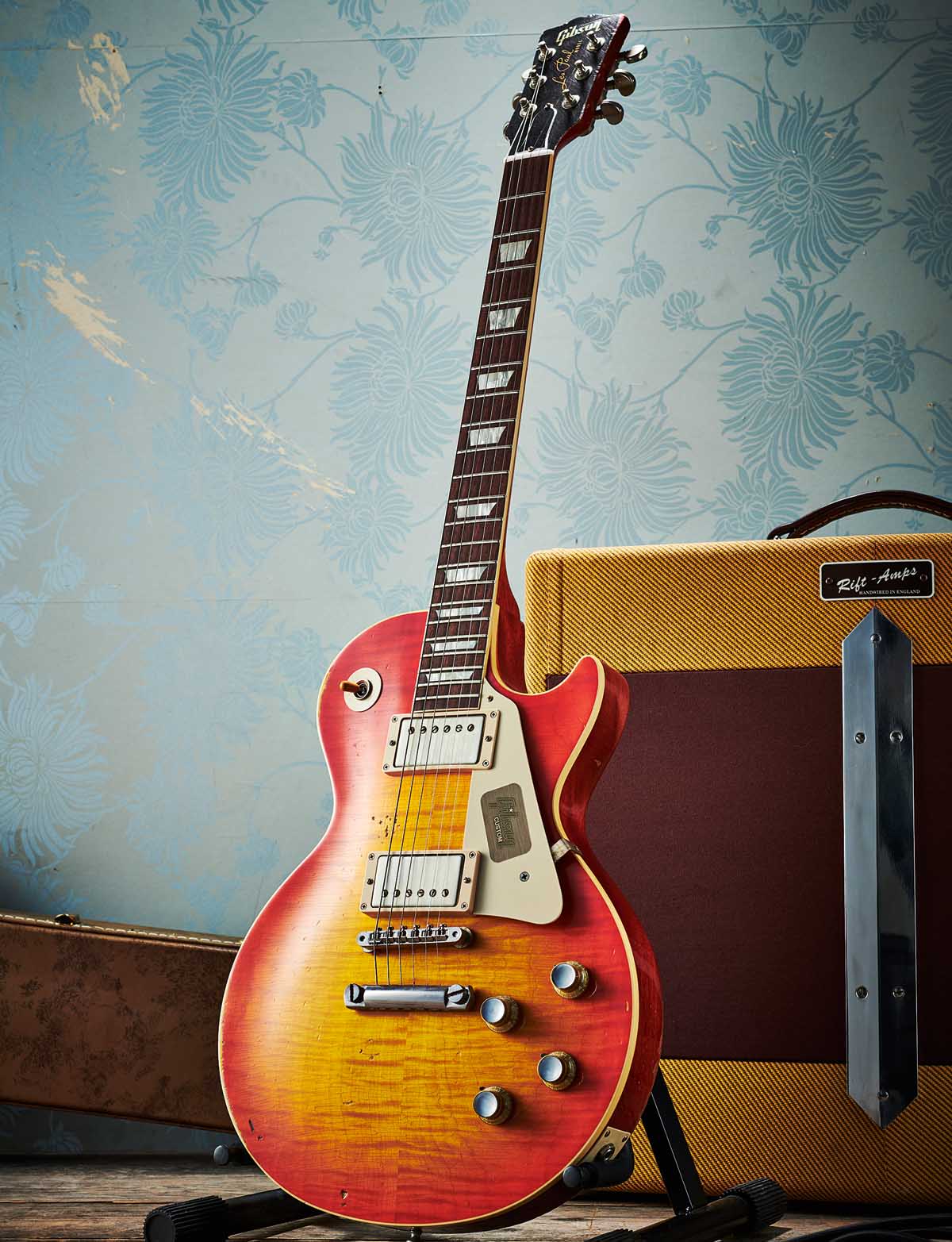
“Jimmy Page’s ‘Number Two’ was heavily customised,” confirms Steve. “It was a backup for his ‘Number One’ ’Burst, and he had half a dozen different switches installed to push the boundaries of what a Les Paul could do.
“There are two switches attached to the underside of the pickguard you can use to control phase and flip between series or parallel circuitry, and there are four push-pull pots – the volume knobs also switch between series and parallel, and the tone knobs split the coils.”
Original PAFs typically display a broad range of DCR values from 7kohms to over 9kohms, and we were interested to discover that the pickups in this guitar sit somewhere in the middle (as do all four of the Les Pauls we have here), measuring 8.2kohms in the bridge and 7.8kohms in the neck.
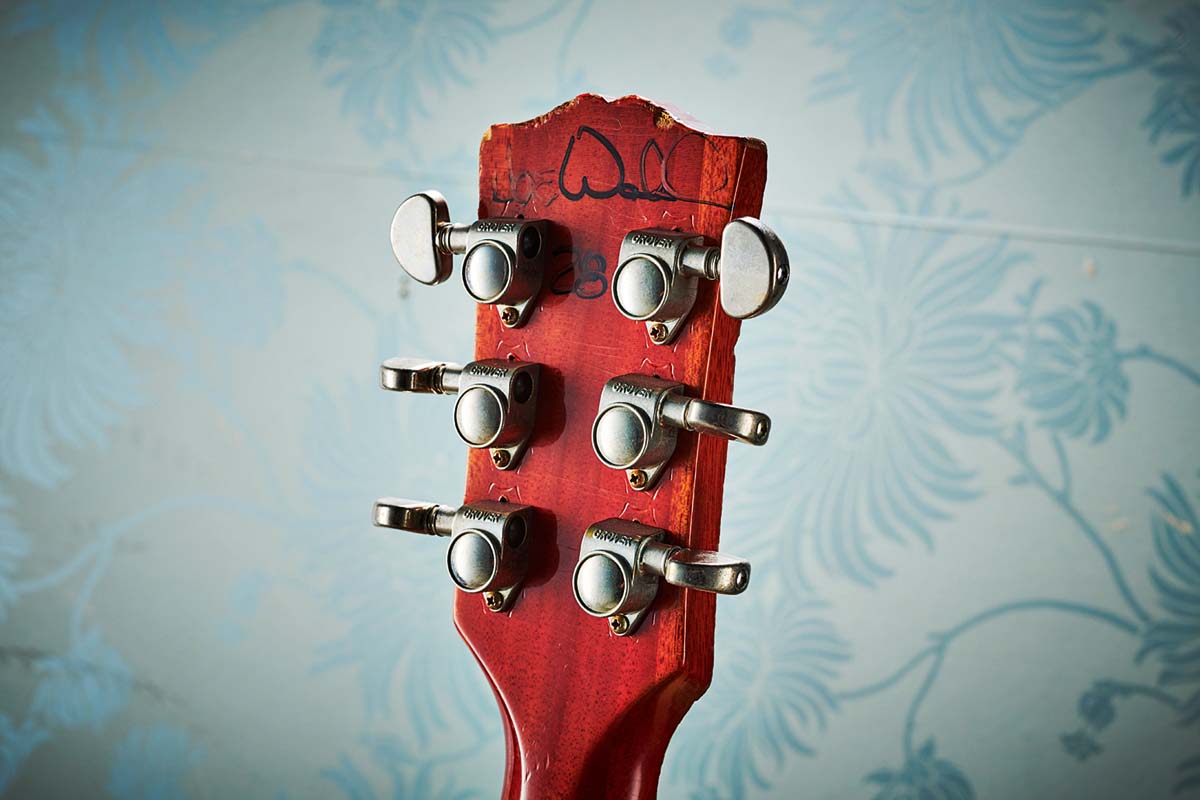
Steve plugs in and flicks it into standard mode. The sound is clear, articulate and expressive. “Those are the characteristics you’d look for in a PAF – an airy sound that isn’t too thick or bloated,” highlights Steve.
“The whole thing about PAFs is that they sound open and clear. These pickups were made specially for this model. They’re based on Gibson Burstbuckers – there’s an Alnico 5 in the bridge and an Alnico 3 in the neck.
“Jimmy likes really skinny necks and this has got the same shaved-down profile as his ’59. Back in the day, people would occasionally shave the neck down to give it a faster feel. It feels like a 1960 ‘blade’ neck profile but there’s very little taper of any kind – it feels the same all the way up the neck.
“It’s got Grover tuners like Jimmy’s. That was a common upgrade back in the day for a hard-working guitar. The finish is like an Iced Tea ’Burst. The red aniline dye they used in the original ’Bursts faded out quite easily but that’s what gives them a bit of individuality and character, along with the different grains and flames.

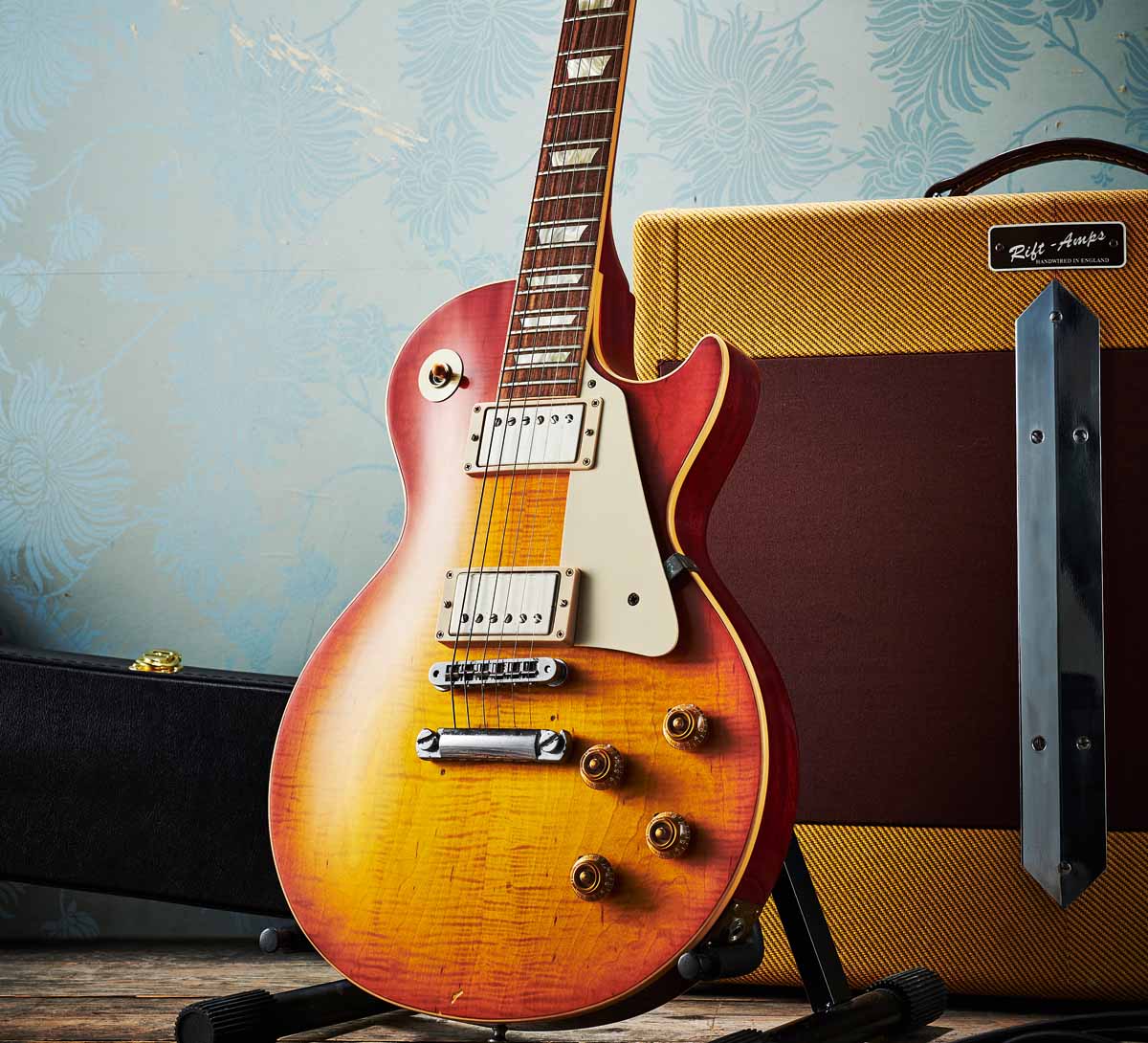
“This one is subtle but it’s very pretty. It’s number 66 of 100 that were Tom Murphy-aged. Another 25 were also signed by Jimmy Page, and they made 200 VOS guitars.” Jimmy Page was sold his ‘Number One’ Les Paul by Joe Walsh, another renowned ’Burst player whose very own Gibson Custom Shop signature model – a 2013 Joe Walsh 1960 Les Paul Aged & Signed – is also on display at Vintage ‘n’ Rare.
“This is number 28 of 50 that were aged by Tom Murphy and signed by Joe Walsh,” Steve tells us. “They made 75 other Murphy-aged [non-signed] ones, along with 125 VOS guitars. It’s got golden era-style nickel hardware and reflector knobs, and – like the Jimmy Page ‘Number Two’ – this one features Grover tuners as per the original mod.
“In 1960, Gibson changed the red aniline dye they used to spray the sunbursts. The effect is a more pronounced ’Burst – sometimes referred to as a ‘tomato soup ’Burst’ – which stands up differently over time. In 1960, they also changed the neck profile to make it much shallower. And as far as I can tell, this one is very consistent with the real thing.
“This guitar is definitely the brightest looking out of the lot. There’s a lot of orange-y red in the finish, which they named Tangerine Burst. It really stands out from the ’59s. The flame on this guitar is very pronounced, almost holographic. It’s got real depth.
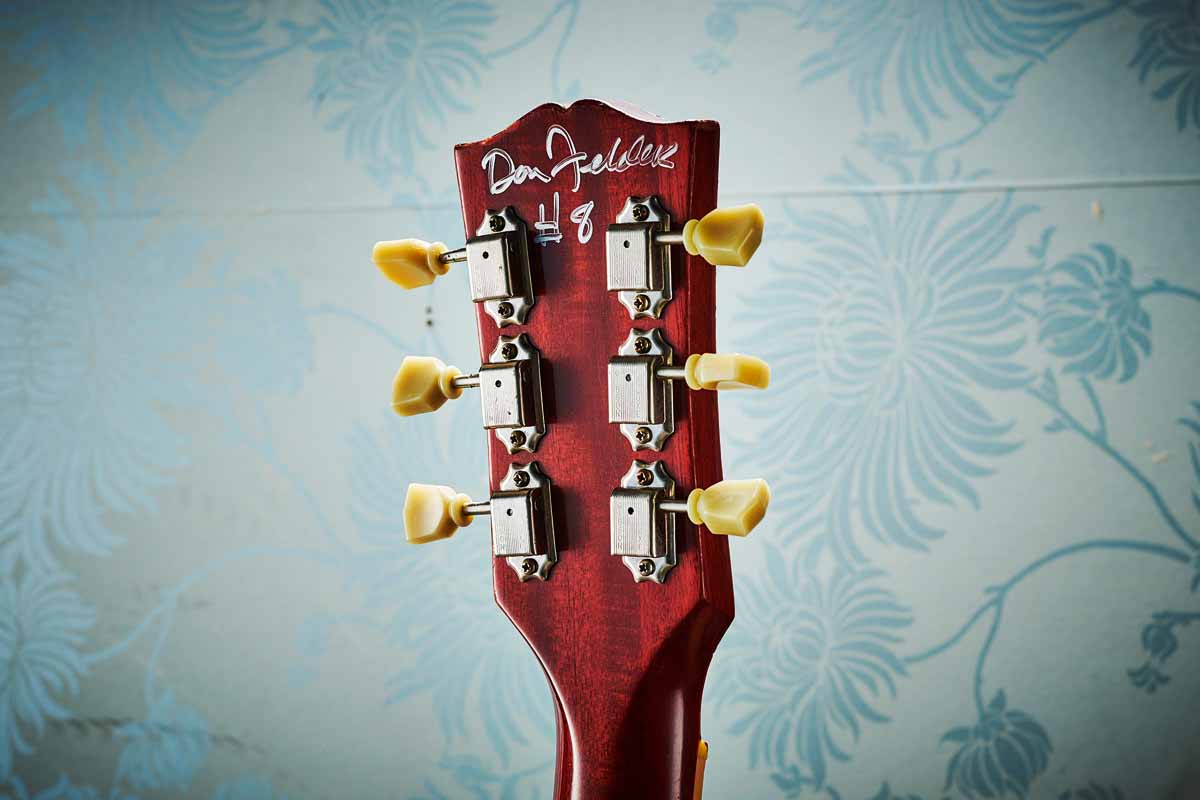
“The dings on the top mimic the original, as does the buckle rash on the back, which is a common thing to see on original ’Bursts. If you look more closely, there are subtler ageing effects like the ‘worming’ you can see in the finish on the back where there are indents but no finish has been taken off.
“I think that’s been done very well. The weight is very nice. Most Les Pauls have a bit of weight to them because they’re made of solid mahogany and maple.” Although both pickups have a DCR measurement of 7.9kohms, when Steve plugs in, we immediately discover it sounds pokier than the Page guitar.
“The bridge pickup sounds like there’s a bit more top-end to it,” remarks Steve, “and the neck is quite rounded but there’s still enough air in the tone. These pickups, Alnico 3 Custom Buckers, were designed to replicate the sound of the PAFs in Joe’s original guitar.
“PAFs have their own tolerances and character, and the magnets degrade over time, so it’s really interesting how Gibson went about trying to recreate the individuality of each guitar. It makes you wonder what these old ’Bursts sounded like when they were brand-new.”
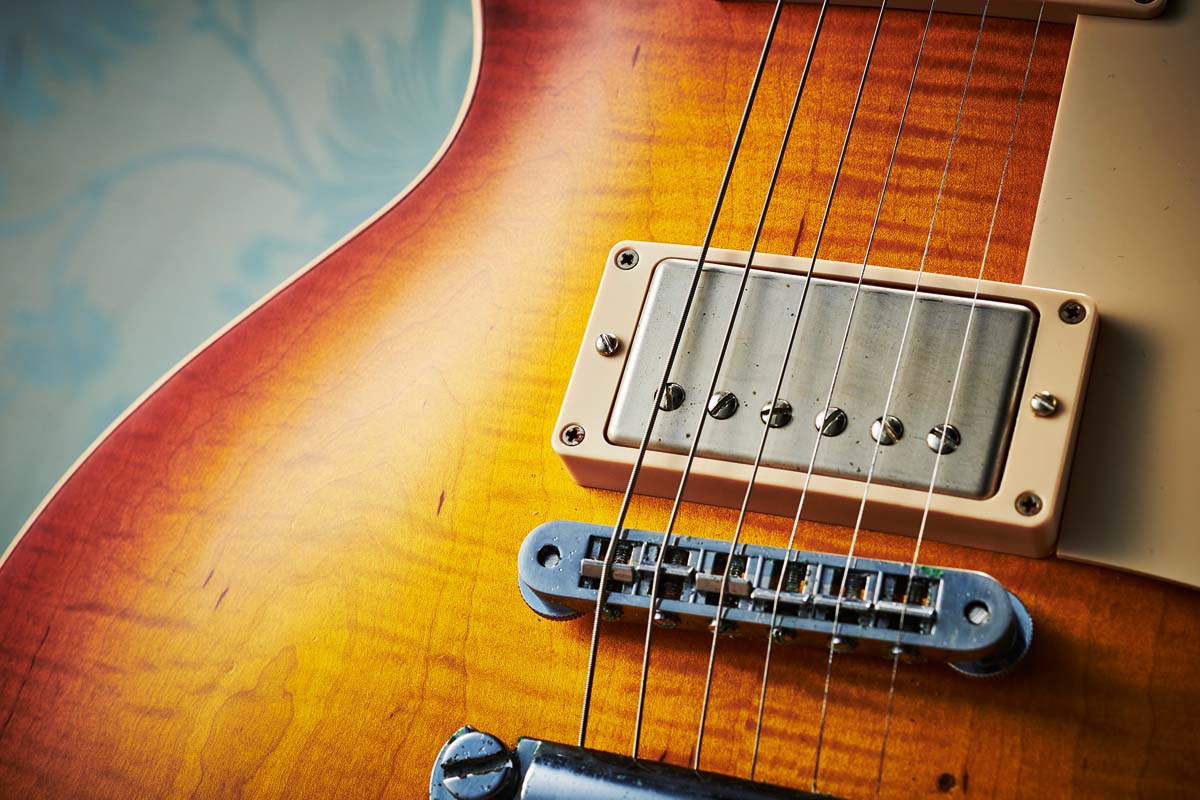
Much like Joe Walsh’s 1960 ’Burst brought a harder rock sound to the Eagles’ sonic palette, so too did Don Felder’s 1959 ’Burst, replicated here in the form of a 2010 Gibson Custom Shop Don Felder ‘Hotel California’ 1959 Les Paul Aged model.
PAFs have their own tolerances and character, and the magnets degrade over time, so it’s really interesting how Gibson went about trying to recreate the individuality of each guitar
“Apparently, Don keeps the original under lock and key and uses these ones to gig with,” says Steve. “Gibson made some artist proof models – prototypes that go to the artist to be checked out and signed off. The artists were heavily involved in the process, which is great.
“It’s good to know they’ve played an integral part in the whole thing. It gives a genuine insight into the instruments they play. This is number eight of 50 aged guitars that were played and signed by the man himself, so it’s quite low in the run. There were also another 100 hand-aged, plus 150 VOS ones.
“This top is awesome. It has a nice tight flame and you can see some cool vertical grain in the maple on the bass side. For me, it’s definitely up there in terms of looks. The sunburst – known as the Felder Burst – has a really faded look. It’s kind of like an Iced Tea but it’s got a bit more red in it, like a super-washed Cherry.

“Like Don’s ’Burst, it’s got the original-style Kluson tuners and a Nashville bridge. This one is a really nice weight: it weighs 8.6lb, which is very good for a Les Paul Standard. It’s got a much fuller neck profile than the others.
“Many of the original ’59s have a bit of meat right in the middle of the neck, which gives them a mega-soft ‘V’, but this feels quite rounded. There are transitional features with ’Bursts. Early ’59s, for example, can have typical ’58 features like plainer tops and chunkier neck profiles.
“This one feels a bit like the [2012 Gibson Custom Shop] Paul Kossoff 1959 Les Paul Standard Aged we also have in stock, and that’s based on what is thought to be an early ’59. It’s a chunkier neck but it’s still very comfortable.”
Through the amp, this guitar sounds particularly smooth in the neck position, while the bridge pickup has an almost outof-phase quality to it.
“There’s a honkiness to it,” agrees Steve. “That can help leads cut through nicely. But it’s still got that characteristic PAF airiness. It’s fitted with a Burstbucker 2 in the neck and a Burstbucker 1 in the bridge. The neck pickup measures 8kohms and the bridge measures 7.7kohms, which is interesting because the bridge pickup is normally the hotter of the two.”
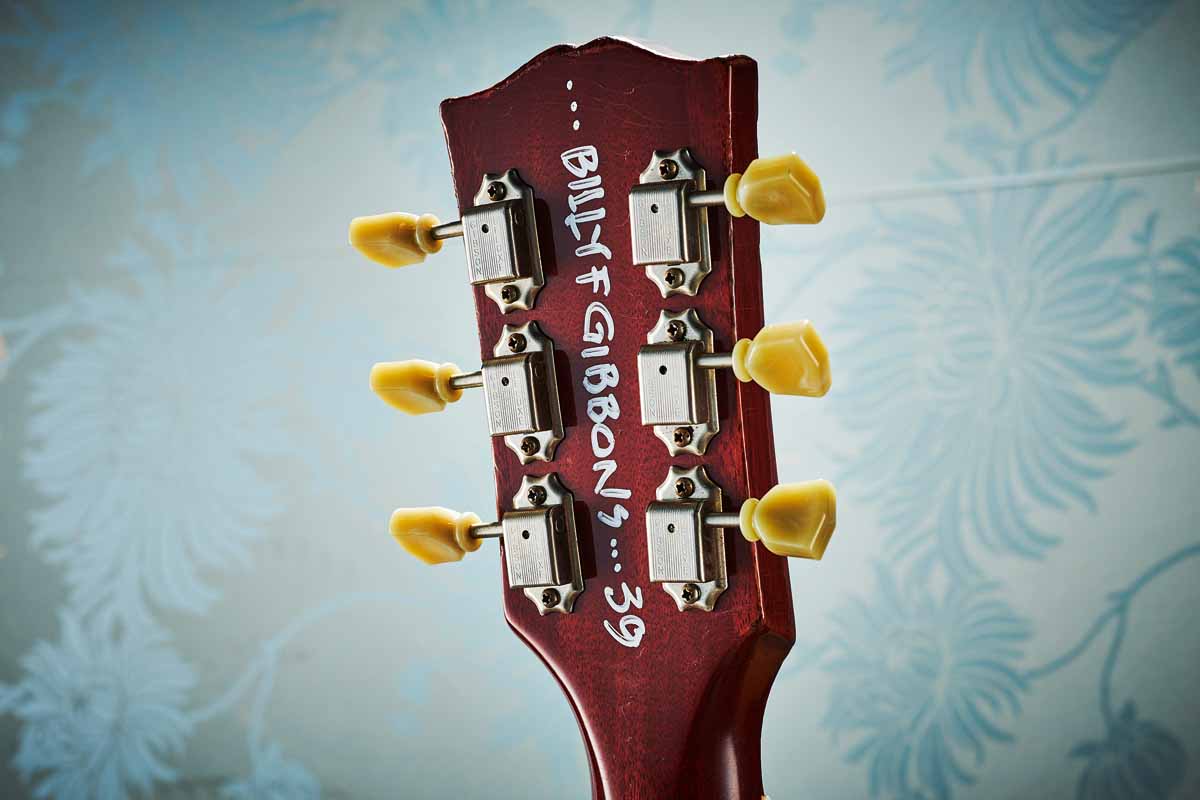
Among the most revered and collectible artist models known is the 2009 Gibson Custom Shop Inspired By Series Billy Gibbons ‘Pearly Gates’ Les Paul Aged.
“Billy’s original ’59 ’Burst was nicknamed ‘Pearly Gates’ after his band’s car, which they believed was touched by divinity,” recounts Steve. “When it was eventually sold, Billy got some money that went towards the purchase of his ’59 ’Burst.
“Many people consider these Pearly Gates guitars to be Tom Murphy’s best stuff. I mean, this really does look and feel like an old one to me. There were 250 VOS guitars made, along with 100 Murphy-aged instruments, 50 of which were also played and signed by Billy. This is number 39 of those 50. They’ve really gone to town on this.
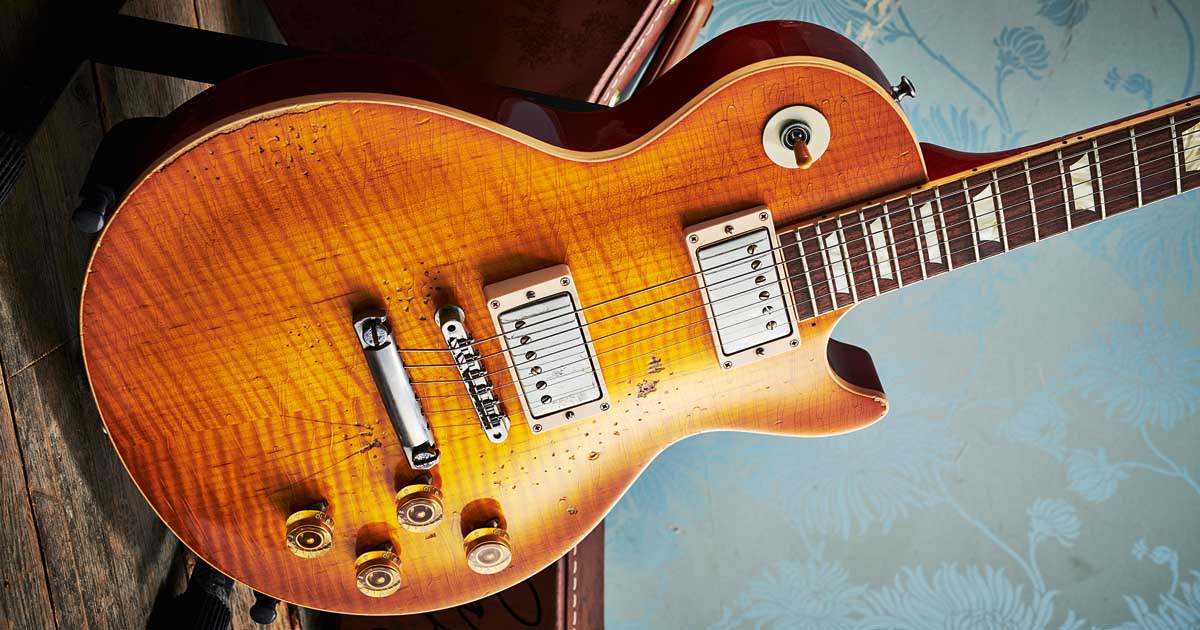
“It’s probably involved more work than any of the others to get it looking right. There’s lots of lacquer checking and detailed bits of wear across the whole guitar, with some nice tarnishing to the hardware. The mahogany back has this incredibly smooth contoured wear along the upper edge and is beautifully figured, as is the maple top.
“The top has a nice dish – very pronounced like the original 50s ’Bursts – and the finish is a little bit darker. It’s more on the Tobacco Burst spectrum, and with a slight redness to it.
These are all very unique handmade guitars. And that’s also what makes vintage stuff so great
“The bridge pickup measures 8.1kohms and the neck measures 7.3kohms. They’re Seymour Duncan Custom Shop PAF replicas made specifically for this model. They’re very natural and woody sounding.
“Again, it’s a very unique guitar. These are all very unique handmade guitars. And that’s also what makes vintage stuff so great. Everything is so streamlined and sped up now. Nowadays, for example, the wood is kiln-dried but back in the 50s the wood they were working with was old already.
Everything changes over time, from the wood to the pickups, so it’s nice that Gibson have acknowledged those unique characteristics and attempted to recreate them as best they can. And they get pretty close – these are all really great guitars. They’re cool things to own – it’s like your own slice of rock ’n’ roll history. It’s as close as you can possibly get to the real thing.”
Rod Brakes is a music journalist with an expertise in guitars. Having spent many years at the coalface as a guitar dealer and tech, Rod's more recent work as a writer covering artists, industry pros and gear includes contributions for leading publications and websites such as Guitarist, Total Guitar, Guitar World, Guitar Player and MusicRadar in addition to specialist music books, blogs and social media. He is also a lifelong musician.
“It combines unique aesthetics with modern playability and impressive tone, creating a Firebird unlike any I’ve had the pleasure of playing before”: Gibson Firebird Platypus review
“This would make for the perfect first guitar for any style of player whether they’re trying to imitate John Mayer or John Petrucci”: Mooer MSC10 Pro review











